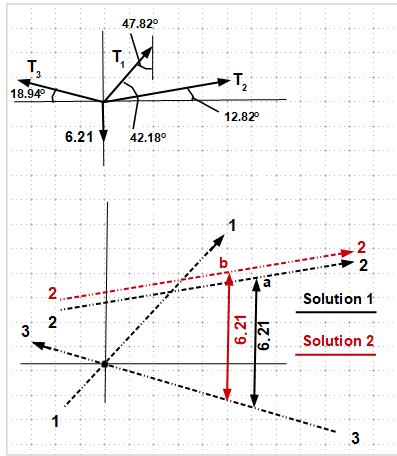The graphic diagram below shows there are infinite solutions (non-unique) to this problem.
Steps:
Draw the gravity load to scale and mark the ends "a" and "b".
Draw a construction line parallel to the vector $T_1$ from point "a".
Draw a construction line parallel to the vector $T_3$ from point "b".
Now make a line parallel to the vector $T_2$, but, what is the unique line length required to close the vector loop???
Let's try another sequence to draw the vector loop.
Draw a line (3-3) parallel to $T_3$.
Draw a line (1-1) parallel to $T_1$ and let it intercept the line 1-1.
Set the scaled vector 6.21 on line 3-3 at 2 locations, and call the upper points "a" and "b" respectively.
Draw two lines parallel to $T_2$ and let the lines pass the points "a" and "b", now we get two sets of solutions, which can be more.



